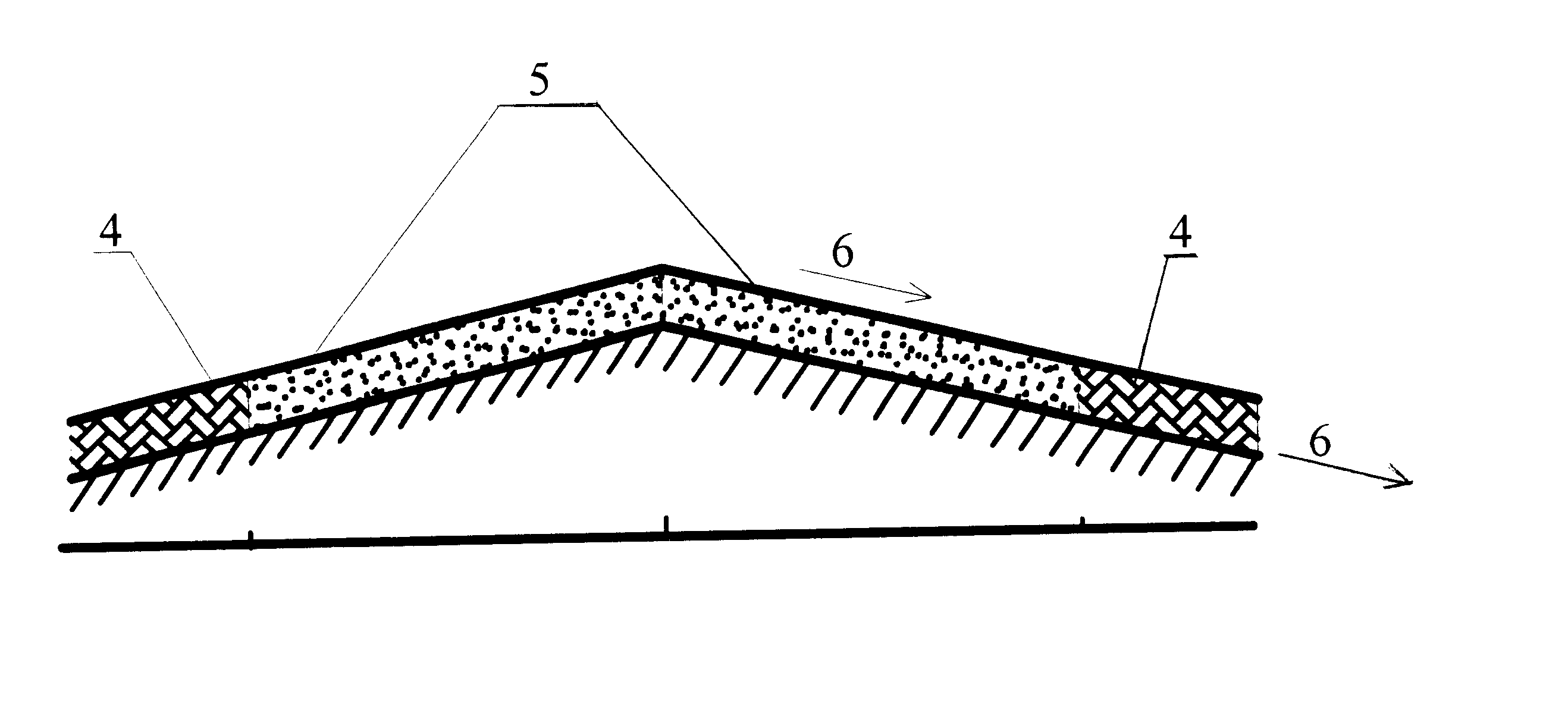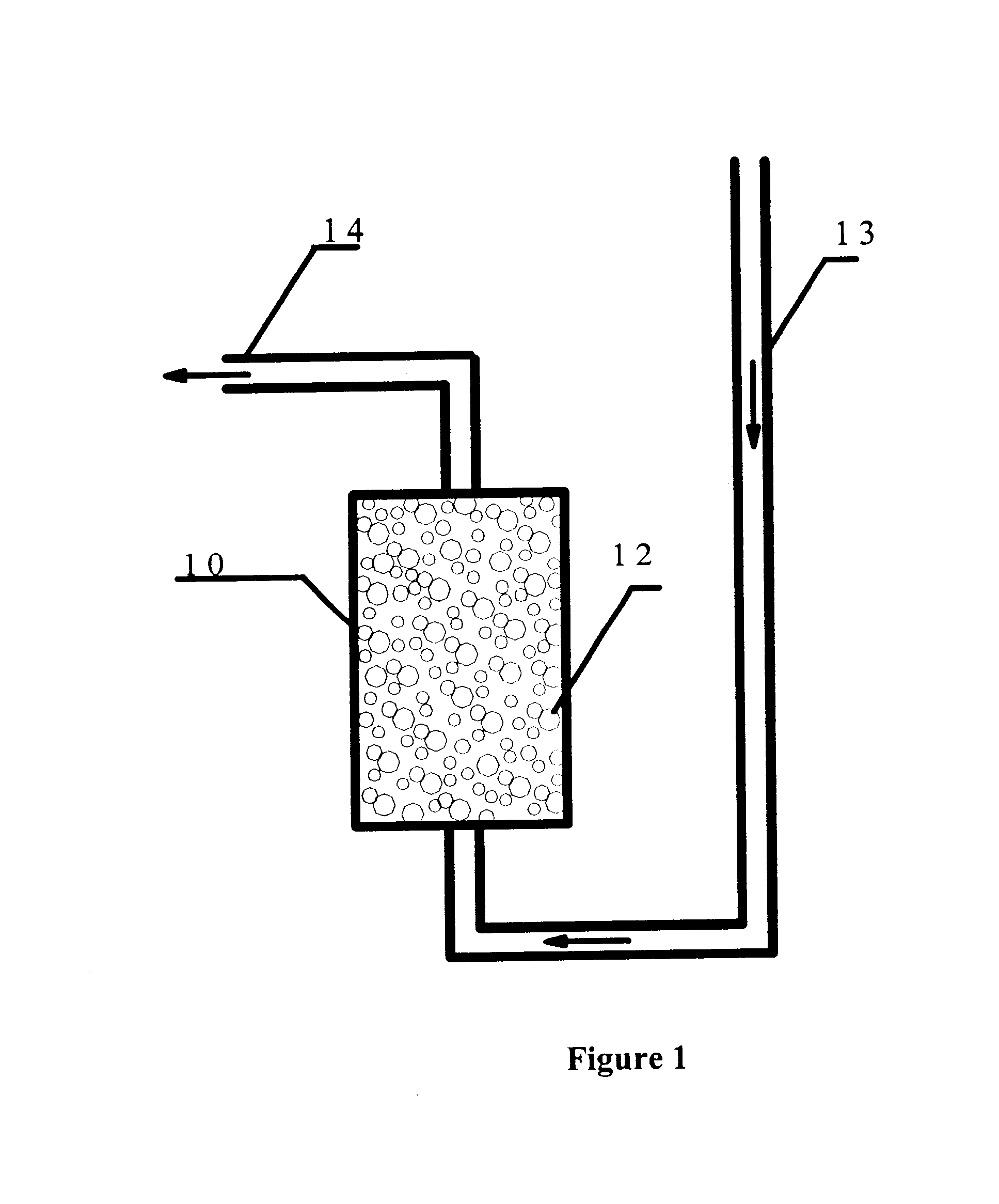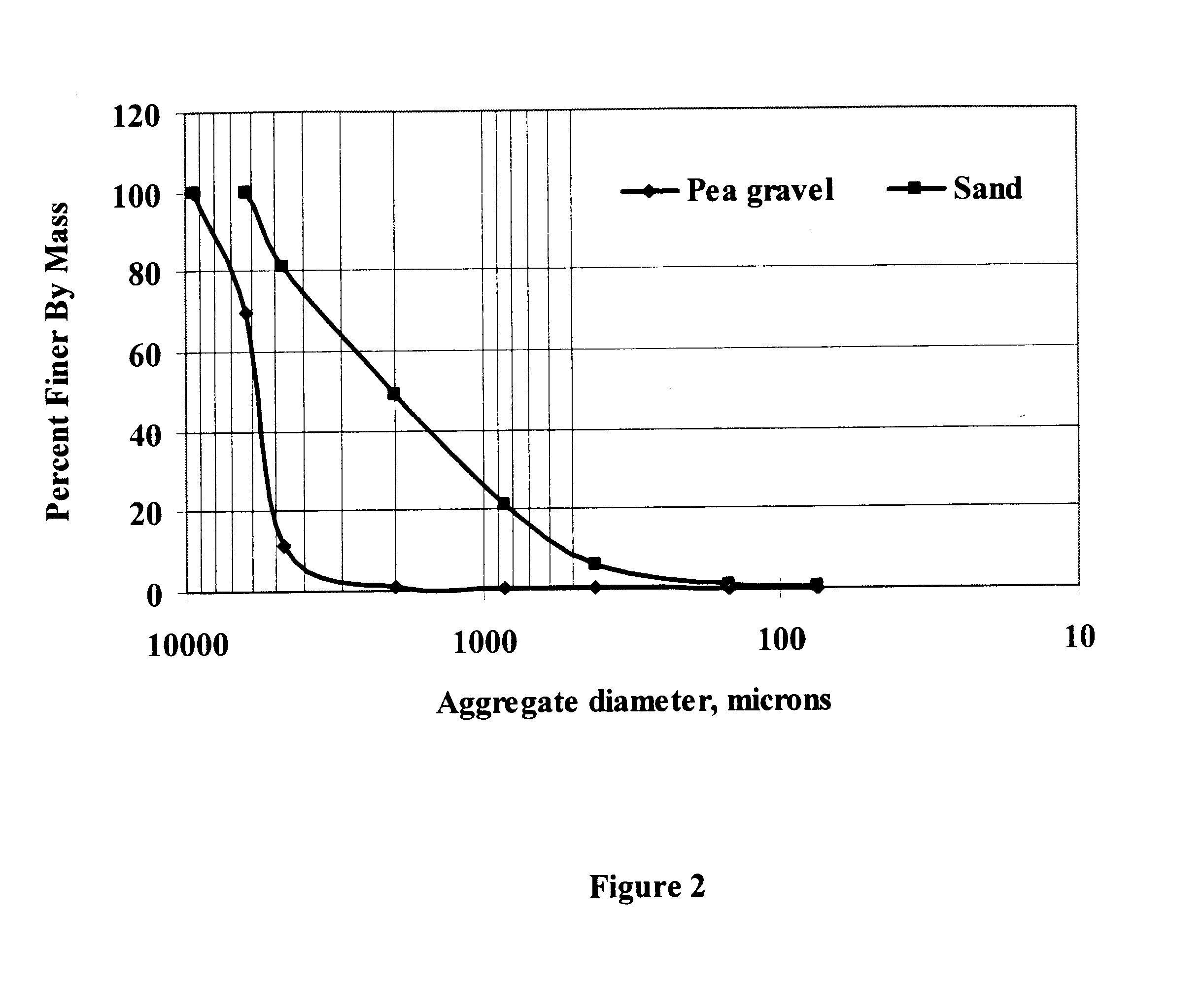Porous pavement for water quantity and quality management
a technology of porous pavement and water quantity, applied in the direction of other chemical processes, ways, separation processes, etc., can solve the problems of relatively little absorption capacity of gac, very little capacity of sand to remove dissolved metals, and ineffective removal of dissolved metals
- Summary
- Abstract
- Description
- Claims
- Application Information
AI Technical Summary
Problems solved by technology
Method used
Image
Examples
Embodiment Construction
The present invention may be put to enumerable uses. For example, while the above disclosure discusses a cementitious porous pavement material, the porous pavement material could also be bituminous or asphaltic. Porous asphalt can be made by reducing the asphaltic binder and, in effect, producing a lower binder--aggregate ratio. Typically, the amphoteric compounds described above may also be added to the bituminous porous pavements during the mixing stage, creating the same type of waterborne metals filter. However, with all porous materials, an amphoteric material can always be added as a surface coating and much of the porous surface can be coated by application of a spray on the porous surface.
Large areas of porous pavements may also be used as storm water storage basins. Parking lots and similar large paved areas are often the source of significant volumes of storm water runoff The porous pavement of the present invention provides a means of substantially reducing the volume of ...
PUM
| Property | Measurement | Unit |
|---|---|---|
| Hydraulic conductivity | aaaaa | aaaaa |
| Acidity | aaaaa | aaaaa |
| Dimensionless property | aaaaa | aaaaa |
Abstract
Description
Claims
Application Information
 Login to View More
Login to View More - R&D
- Intellectual Property
- Life Sciences
- Materials
- Tech Scout
- Unparalleled Data Quality
- Higher Quality Content
- 60% Fewer Hallucinations
Browse by: Latest US Patents, China's latest patents, Technical Efficacy Thesaurus, Application Domain, Technology Topic, Popular Technical Reports.
© 2025 PatSnap. All rights reserved.Legal|Privacy policy|Modern Slavery Act Transparency Statement|Sitemap|About US| Contact US: help@patsnap.com



